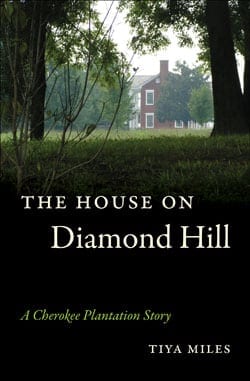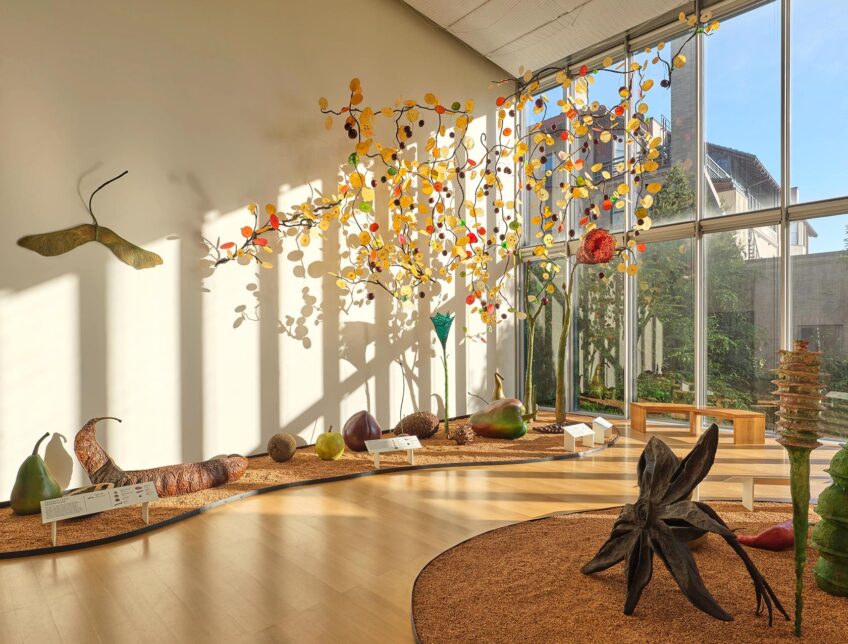
In her new book, “The House on Diamond Hill: A Cherokee Plantation Story,” author Tiya Miles paints the most detailed picture yet published of the lives of the black slaves to the Cherokee. A professor at the University of Michigan, where the Harvard graduate teaches both Afro American and Native American studies, Miles has emerged as a leading scholar of relations between the Cherokee and African Americans in the early 1800s.
In this interview with Kenneth J. Cooper, she talks about how she became interested in the subject and mined the archives of Moravian Christian missionaries for details about slaves on the northwest Georgia plantation of James Vann and his son Joseph Vann, who in their day were the biggest slaveholders in the Cherokee Nation.
She also offers her opinion about the legal fight of the Cheorkee Freedmen, the descendants of the Cherokees’ slaves, to restore their rights as tribal citizens under an 1866 Treaty.
Cooper is a descendant of Cherokee Freedmen. Some relatives by marriage were slaves to Joseph Vann after he relocated to what is now Oklahoma.
How did you get into this area of research? I don’t know whether you have family connections.
Well, I started out in college doing Afro American Studies [at Harvard] and focused on literature. I did have an oral history from my family, coming from my grandmother, about Native American ancestry. But it was always pretty vague …
It really wasn’t until I met my current husband, who is Native American. He’s from Montana. He’s Gros Ventre. It was really through our personal relationship that I started thinking more about the intersection of African America and Native America. So when I went to my Ph.D. program [at the University of Minnesota], I was lucky enough to be at a place where there is a very strong Native faculty and Native history focus.
Did you ever track down the family oral history?
I did not. I asked some questions of my grandmother and some older aunts and uncles. What I found was the story changed so much, there was so little consistency, I didn’t feel comfortable about making any kind of claim about it. Maybe when I retire, I’ll go back and do some more history and see what I can find out.
How does your new book help people understand the odd history of Native Americans holding slaves, which goes against the grain of many people’s assumptions?
One thing that I try to do to make this history accessible and understandable is to put it in the context of American and also European colonialism. The Vann family slaveholding didn’t just pop out of nowhere. It was connected to a long history of colonial oppression that Cherokees faced.
So before James Vann became one of the wealthiest slave-owners in the Cherokee Nation, he was a young boy in a Cherokee Nation that was just under siege in wars with England and the United States, trying to maintain its landholding. He was a young boy when the Cherokee Nation was crippled by smallpox, a disease that was brought to mainland North America from Europe. It doesn’t lessen what he ended up doing to people with dark skins that he held in bondage. But I think it does show the pressure cooker that Cherokees were living under, how narrow their choices were.
How did you find out that the Moravian missionary archives include such rich detail?
The translations are new. They were originally written in German script, a very difficult-to-read style of German, and Moravian archive staff members started translating them.
The Moravians were careful observers and wrote quite a ton reflecting their experience in the Cherokee Nation. The first Moravian mission to the Cherokees was on James Vann’s plantation … He and other Cherokee leaders convinced the Moravian missionaries that if they were going to come onto Cherokee land to teach the Gospel, they would also have to teach Cherokee children how to read and write English. That was the deal.
These daily diary entries talk about what happened on the plantation and who was who, including the population of enslaved people … I kept noticing this woman … Her name was Pleasant. She was bought to help this mission — which, of course, would seem ironic now, to go teach the Gospel and find a slave to help you.
A couple of missionaries, the Gambolds, really had a hard time with Pleasant. They complained about her constantly. They said she was always cursing at them, that she wouldn’t do her work. They even said that she tried to convince the slaves on the Vann plantation not to listen to them. She said that their religion was ‘nothing but hypocrisy.’ So Pleasant was very resistant to her enslavement.”
So what’s next with your research and writing?
I was recently at the Vann House and book-signing there. I was on a panel and spoke about women on the Vann plantation. Someone asked if I had thought about writing a children’s book … [about] some aspect of the Vann plantation. I’m working on that right now.
The next scholarly project, I think, will be on Midwest abolitionism. I’m interested in trying to pin down Native American people and places and trails on the Underground Railroad. That idea came to me through a class actually … We went on a local Underground Railroad tour here in our county, Washtenaw County, [Michigan]. We learned from our tour guide one of the main routes that was used for trying to aid people in their escape was an old Indian trail. That just got me thinking about what may have been overlapping routes of black people and Native people … [in] the 1830s and 1840s.
What is your opinion of the ongoing dispute over the citizenship rights of Cherokee Freedmen descendants?
What a messy issue and a heartbreaking issue, I think, to see the pain of the past mingle with pain of the present … I would like the Cherokee to do the right thing, and I think the right thing is to recognize the history in all its facets and to see that citizenship for some of freed people is part of the package of reparations … Our people were enslaved by Cherokees. Cherokees did benefit from them. There’s a good deal of suffering that took place in that. It’s actually demeaning — very, very seriously — denying political rights to people who were once promised those rights and who were once held in bondage by the Cherokee Nation.






